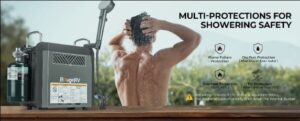
1 Strengthen the installation management of the roller system to ensure that the roller system is in normal working condition
The working condition of the rolling mill has a great influence on the life of the roller bearing. The same bearing is used in the rolling mill under different working conditions, and its service life varies greatly. The working conditions of the rolling mill include: load and the distribution state of the load on the bearing, speed, sealing, lubrication, heat dissipation, working temperature and so on.
In addition, the bearing life of the roll has a lot to do with the assembly state of the roll train in the rolling mill. If the roll train cannot be in the correct installation position required by the design, a large uneven load distribution and additional load will occur, which will seriously Affect the effective service life of the bearing.
Therefore, in terms of adjusting the assembly relationship between the roll system and the arch and the working state of the rolls, the focus should be paid attention to the following points:
①Adjust the assembly accuracy of the rollers, regularly check and adjust the side slides of the work rolls and backup roll bearing seats to ensure that the axes of the rolls are parallel.
The bearing seat of each set of rollers should be strictly controlled, and should not be used with each other at will, so as to reduce the additional axial force caused by the crossing of the rollers and affect the shape of the rolled material.
② The transmission system, especially the universal joint shaft, should be replaced regularly, otherwise additional axial force will be generated due to oscillation caused by excessive total clearance.
③The life of the bearing is inseparable from the design of the bearing seat. If the bearing seat is improperly designed and manufactured, it will cause uneven force on the bearing and reduce the bearing life. The bearing seat should be self-aligning to avoid the eccentric load of the bearing due to the deflection and deformation of the roll.
Before the roll system is installed in the arch, carefully check the contact between the bearing seat and the self-aligning bearing of the pressing mechanism, as well as the contact between the bearing seat and the self-aligning bearing of the arch base (or rolling line adjustment mechanism), so as to avoid the blocking phenomenon of the self-aligning mechanism. .
④Check whether the size, geometry, accuracy grade, and tolerance range of spare parts related to bearings are consistent with the design. Here are mainly flatness, geometry, tolerance accuracy, contact situation of the discharge window of the rolling mill.
The wall thickness difference of the bearing seat is a key dimension that determines the coaxiality of the bearing; as well as the flatness, geometry, tolerance accuracy, and contact of the mating surface of the bearing seat and the arch window.
Then there is whether the side gap after the roll system is installed in the archway meets the design requirements. If the gap is too large, it will inevitably cause reversal and start-up impact, roll crossing and so on.
⑤ Check whether the smoothness and hardness of the contact surface with the bearing are within the specified range, and whether all clearances and interference fits meet the design requirements, etc.
⑥The deflection of the roll has a great influence on the load distribution of the roll bearing. If the deflection of the roll is too large after being stressed, the four-row roller of the four-row cylindrical roller bearing for the rolling mill will be only half or only one row will be stressed, which will be serious Shorten the effective service life of the bearing.
Therefore, it is very important to emphasize that the load of the rolling mill is uniform and reasonable, and it is very important to strictly prevent overloading.
In terms of assembly of four-row cylindrical roller bearings and bearing housings for rolling mills, the key points should be paid attention to the following points:
Installation of inner sleeve
The inner ring and the roll neck of the four-row cylindrical roller bearing for rolling mills should have an interference fit. During installation, induction heaters or oil baths are usually used for heating. It is forbidden to use flame baking heating.
The heating temperature is controlled to 80℃~90℃. It should not exceed 120 ℃, otherwise it will easily cause the inner ring raceway of the bearing to be annealed, affecting its hardness and wear resistance, resulting in a reduction in the effective service life of the bearing and premature scrapping.
In induction heating, the inner ring should be mounted on the roll immediately after reaching the specified temperature; when using oil bath heating, the bearing should be quickly removed from the oil after the temperature reaches the specified temperature for 10 minutes, and mounted on the roll while it is still hot.
If necessary, a little pressure can be applied to the end face of the bearing inner ring with the installation tool, which makes it easier to install. After the bearing is installed on the roll, the inner ring must be pressed immediately, and the gap between the end face of the inner ring and the positioning end face of the roll diameter must be checked with a feeler gauge until it cools down.
Installation of the jacket
The outer casing of the four-row cylindrical roller bearing for rolling mills and the inner hole of the bearing seat are transition fit.
When assembling, lightly drive the whole consisting of the jacket, rollers and cage into the bearing seat with a copper rod, and stick to the inner fixed end according to the assembly relationship specified in the drawing.
When installing the outer casing, pay attention to the markings on the end face and the end face of the cage. It cannot be installed in reverse. It should be installed in the order of the initial state when the bearing is unpacked to prevent the bearing from burning due to uneven force on the rollers.
When installing the bearing, the bearing should be placed horizontally. After the bearing is installed, its stress zone should be marked for key inspection when changing the roller; in addition, it is convenient to identify when adjusting the stress zone of the outer ring in the future.
Reasonable assembly of bearing seals
In order to absorb the heat generated by the deformation of the rolling stock and reduce the rolling load, a large amount of emulsion is used in rolling production, and the bearing seat is always surrounded by the emulsion, which contains tiny metal particles and acidic substances produced during rolling. and other impurities.
Once these harmful liquids and solid particles enter the bearing, they will not only affect the performance of the lubricant, destroy the formed oil film, but also directly cause abrasive wear, resulting in early fatigue and failure of the bearing.
In addition, no matter what kind of lubrication method is used, the inner cavity of the bearing seat is required to be kept sealed, one is to prevent the leakage of lubricating oil, and the other is to ensure the sealing of the inner cavity, which can effectively ensure the pressure of oil mist and oil and gas lubrication and ensure the lubrication effect.
Therefore, the sealing of the bearing seat is very important, and the rolling mill with a well-sealed solution has less bearing consumption. Therefore, when assembling the bearing and the bearing seat, special attention should be paid to the installation of the seal, and the assembly should be carried out in strict accordance with the drawings.
Bearing seals can be considered to use ordinary fluororubber skeleton seals, which are not only cheap, but also can achieve good results when used reasonably.
The lip of the shaft sealing ring in the labyrinth on both sides must be installed towards the outside of the bearing, which can effectively prevent the splashing of rolling coolant and tiny metal particles. In addition, it is necessary to prevent man-made damage to the sealing ring during installation.
2 Strengthen the maintenance and maintenance of bearings, and try to extend the effective service life
Inspection during operation
The bearing should be listened to and the working temperature checked on a regular basis according to the regulations.
For listening, you can use a special device to monitor the stethoscope for monitoring, or use a wooden stick or screwdriver to touch one end of the bearing seat, and the other end to the ear for monitoring. Under normal circumstances, the bearing makes a humming sound.
If there is a sharp clicking sound, it means that the lubricant is lacking. If the sound is normal after replenishing the lubricant, it can be judged that it is caused by the lack of lubricating oil; if there is an irregular beating sound , it means that foreign matter has entered the bearing or the bearing has been injured, and the roller table may have been peeled off in serious cases.
The working temperature inspection is to use a thermometer to measure the temperature on the bearing seat. If the temperature rise is too high, it may be that the internal clearance is too small, or the bearing is inaccurately positioned.
Inspection and maintenance after disassembly
According to the different working conditions of the rolling mill, it is stipulated that the roller bearing should be thoroughly inspected and maintained at a certain period of time. It can be combined with the roll change at the same time.
Before the bearing is removed, the load area should be clearly marked, and the outer ring should be turned 90 degrees when reassembling. °, change the outer ring to a bearing area.
When disassembling and inspecting, the bearing should be thoroughly cleaned and dried with dry compressed air. During the inspection, the inner and outer ring raceways, rolling elements and cages of the bearing should be carefully inspected.
If there is dull wear on the raceway and rolling elements, the degree is not very serious. If the clearance does not exceed the standard, it can be regarded as normal wear and can continue to be used; if there is mirror-like bright wear, it is proved to be insufficient lubrication, which If the clearance test does not exceed the standard, you can strengthen lubrication and continue to use it.
If the clearance exceeds the standard, the bearing should be replaced; if there is a small amount of fatigue spalling on the inner and outer ring raceways and rolling elements (also called fatigue pitting, Usually called pitting), indicating that the bearing fatigue life has reached and must be replaced.
If rust is found on the bearing parts during the inspection, it means that there is water or moisture entering the bearing. It may be that the lubricating oil is not suitable, indicating that there is a problem with the bearing seat seal; for oil mist and oil-air lubrication, it may also be that the compressed air contains water.
If the rust is not serious, use oil stone to prepare grinding to clean up the rust, and if it is serious, replace the bearing.
The wear on the cage is usually caused by impurities entering the bearing or poor lubrication.
After bearing maintenance, for grease-lubricated bearings, the removed grease must never be filled into the bearing again, and must be replaced with a new qualified grease.
In addition, when the bearing is disassembled and maintained, the parts related to the bearing assembly should also be inspected to determine whether they meet the dimensional accuracy, smoothness, and contact rate requirements specified in the drawings; especially the wall thickness tolerance of the bearing seat, inner hole cylindricity.
The bearing seat and the archway contact plane shape, contact rate, and the verticality of the inner hole and other indicators to check, find problems and deal with them in time.
If the above regular inspection and maintenance work is done in place, it can ensure that the bearing always works in the correct state, avoid further deterioration of potential problems in time, and can greatly extend the effective service life of four-row cylindrical roller bearings for rolling mills.






